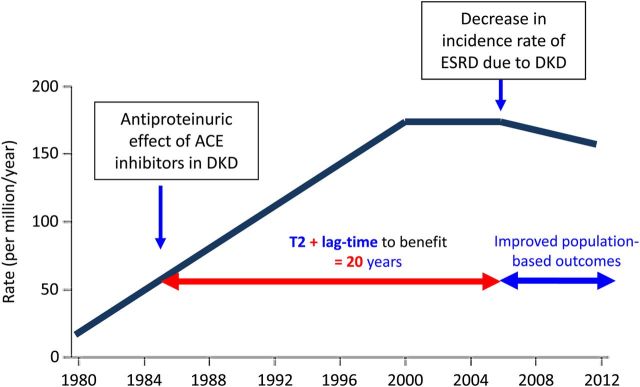Fig. 2.

Potential effects of type 2 (T2) translation on improved patient outcomes versus lag time to benefit. Trends in adjusted chronic kidney failure (CKF) due to diabetic kidney disease (DKD) incidence rate, per million/year, in the US population, 1980–2012. The antiproteinuric effect of ACE inhibitors in DKD was described in 1985 [9]. However, it was not until the 2000s that a decrease in the adjusted incidence of CKF due to DKD was observed. One potential contributor to this late decrease is the lag-time to widespread implementation T2 of nephroprotection with RAS-targeting agents from the mid-nineties. [Modified and adapted from United States Renal Data System, 2014 annual data report: An overview of the epidemiology of kidney disease in the United States. National Institutes of Health, National Institute of Diabetes and Digestive and Kidney Diseases, Bethesda, MD, 2014. The data reported here have been supplied by the United States Renal Data System (USRDS). The interpretation and reporting of these data are the responsibility of the author(s) and in no way should be seen as an official policy or interpretation of the U.S. government].
